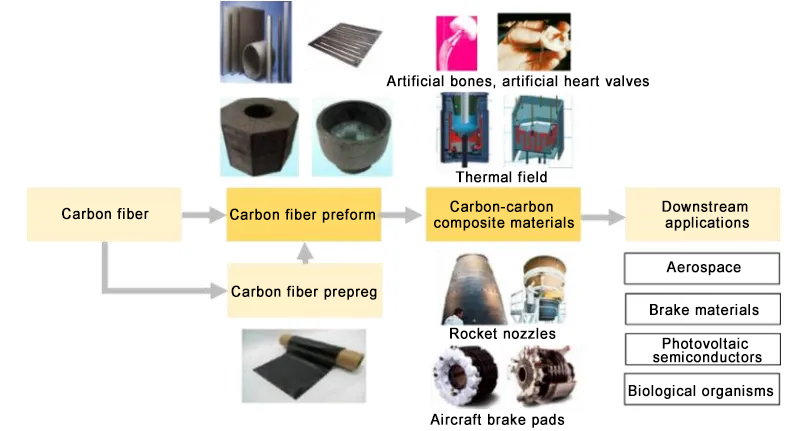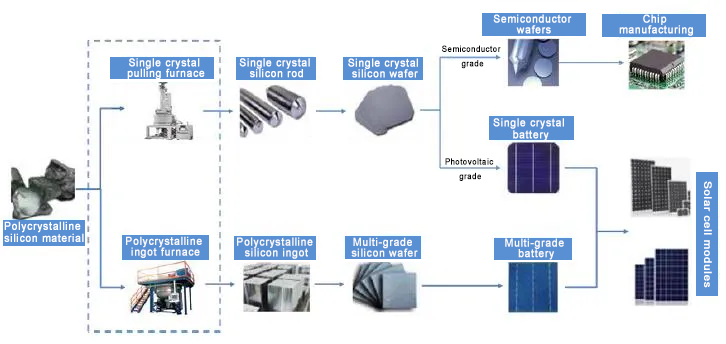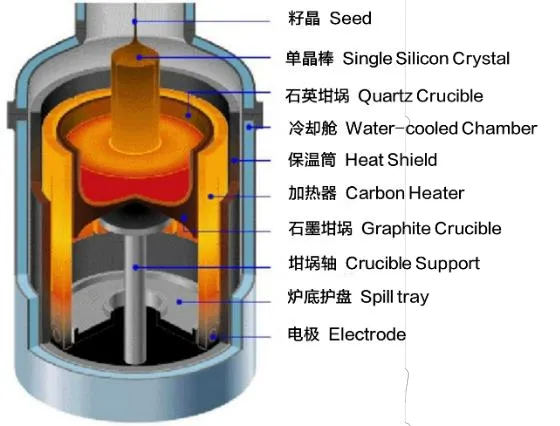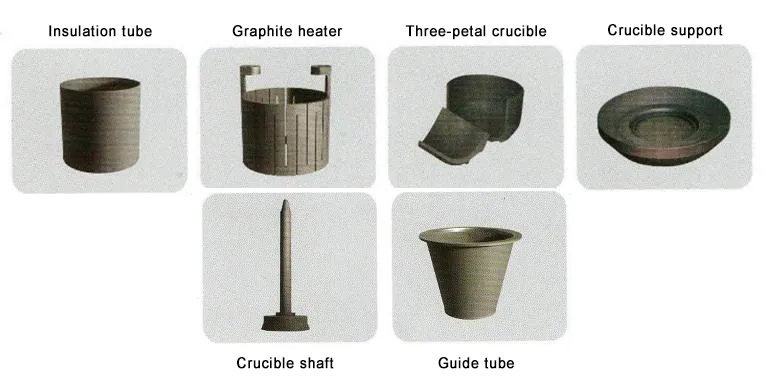Carbon-carbon composites are a type of carbon fiber composites, with carbon fiber as the reinforcement material and deposited carbon as the matrix material. The matrix of C/C composites is carbon. Since it is almost entirely composed of elemental carbon, it has excellent high temperature resistance and inherits the strong mechanical properties of carbon fiber. It has been industrialized in the defense field earlier.
Application areas:
C/C composite materials are located in the middle of the industrial chain, and the upstream includes carbon fiber and preform manufacturing, and the downstream application fields are relatively wide. C/C composite materials are mainly used as heat-resistant materials, friction materials, and high mechanical performance materials. They are used in aerospace (rocket nozzle throat linings, thermal protection materials and engine thermal structural parts), brake materials (high-speed rail, aircraft brake discs), photovoltaic thermal fields (insulation barrels, crucibles, guide tubes and other components), biological bodies (artificial bones) and other fields. At present, domestic C/C composite materials companies mainly focus on the single link of composite materials and extend to the upstream preform direction.

C/C composite materials have excellent comprehensive performance, with low density, high specific strength, high specific modulus, high thermal conductivity, low thermal expansion coefficient, good fracture toughness, wear resistance, ablation resistance, etc. In particular, unlike other materials, the strength of C/C composite materials will not decrease but may increase with the increase of temperature. It is an excellent heat-resistant material, and therefore it has been first industrialized in rocket throat liners.
C/C composite material inherits the excellent mechanical properties and processing properties of carbon fiber, and has the heat resistance and corrosion resistance of graphite, and has become a strong competitor of graphite products. Especially in the application field with high strength requirements – photovoltaic thermal field, the cost-effectiveness and safety of C/C composite materials are becoming more and more prominent under the large-scale silicon wafers, and it has become a rigid demand. On the contrary, graphite has become a supplement to C/C composite materials due to limited production capacity on the supply side.
Photovoltaic thermal field application:
The thermal field is the entire system for maintaining the growth of monocrystalline silicon or the production of polycrystalline silicon ingots at a certain temperature. It plays a key role in the purity, uniformity and other qualities of monocrystalline silicon and polycrystalline silicon, and belongs to the front end of the crystalline silicon manufacturing industry. The thermal field can be divided into the thermal field system of monocrystalline silicon single crystal pulling furnace and the thermal field system of polycrystalline ingot furnace according to product type. Since monocrystalline silicon cells have higher conversion efficiency than polycrystalline silicon cells, the market share of monocrystalline silicon wafers continues to increase, while the market share of polycrystalline silicon wafers in my country has been decreasing year by year, from 32.5% in 2019 to 9.3% in 2020. Therefore, thermal field manufacturers mainly use the thermal field technology route of single crystal pulling furnaces.
Figure 2: Thermal field in the crystalline silicon manufacturing industry chain
The thermal field is composed of more than a dozen components, and the four core components are the crucible, guide tube,insulation cylinder, and the heater. Different components have different requirements for material properties. The figure below is a schematic diagram of the thermal field of single crystal silicon. The crucible, the guide tube, and the insulation cylinder are the structural parts of the thermal field system. Their core function is to support the entire high-temperature thermal field, and they have high requirements for density, strength, and thermal conductivity. The heater is a direct heating element in the thermal field. Its function is to provide thermal energy. It is generally resistive, so it has higher requirements for material resistivity.
Post time: Jul-01-2024



